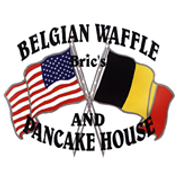
You’ve heard that breakfast is the most important meal of the day, but it wasn’t always that way. In fact, the idea of eating more than one daily meal was once frowned upon. What you know of as breakfast took centuries to develop, with changing perceptions and innovations occurring along the way. Here’s a comprehensive look at how breakfast has changed over the years.
How Breakfast Came to Be
Breaking the Fast
Back in the days of the Roman Empire, it was customary to eat a single meal around noon every day. Anything more was considered gluttonous. This line of thought didn’t change much until the Middle Ages, where the rich indulged in lavish breakfasts and laborers fueled up before work. Monastic life also dictated dining schedules. Monks and nuns couldn’t eat before Mass, and they could only eat meat half the days out of the year. This is where the term breakfast comes from—“breaking the night’s fast.”
An Industrial Transition
It wasn’t until the Industrial Revolution that breakfast gained steam. The boom in the urban workforce meant a lot of people now had a set schedule. Long days of work required sustenance to get through the day, so daily morning meals became essential. Bread, cheese, and leftovers were already common breakfast fare, but Americans wanted more. Adding lots of hearty meats, potatoes, cornbread, and flapjacks to their plates without being active enough to work it off created indigestion and weight gain.
Introducing Cereal
The solution to this growing concern was cereal. In 1863, a health reformer named James Jackson created the world’s first breakfast cereal, Granula, using graham flour. Another health food pioneer, John Kellogg, created a popular cereal by accident. He forgot about some maize he had boiled, which went stale when left out. He flattened it, put it in the oven, and invented cornflakes. Despite both cereals being relatively tasteless, they were big hits and sold as health foods. People would add milk to give them some flavor, sparking the tradition still held today.
The Push for Breakfast
The American government was soon promoting breakfast as the most important meal of the day. Companies began marketing to children, adding colorful cartoon characters and sugar to their cereals. The need for quick food steadily increased, so instant options such as oatmeal, coffee, and toast gained traction. Treats like French toast, waffles, muffins, and pancakes also gained popularity, as many Americans wanted something sweet to start their day.
Belgian Waffle & Pancake House isn’t just any breakfast restaurant. This diner prides itself on savory bacon and sausage, delicious stacks of pancakes, and of course, Belgian waffles. Start your day off right with fluffy waffles topped with powdered sugar, fresh fruit, cinnamon, or pecans. Ready for a lunch break? Stop by for a refreshing salad or a classic sandwich. Take a look at their menu online, or call (417) 334-8484 to speak with a friendly staff member.
About the Business
(2,291 reviews)
Have a question? Ask the experts!
Send your question

